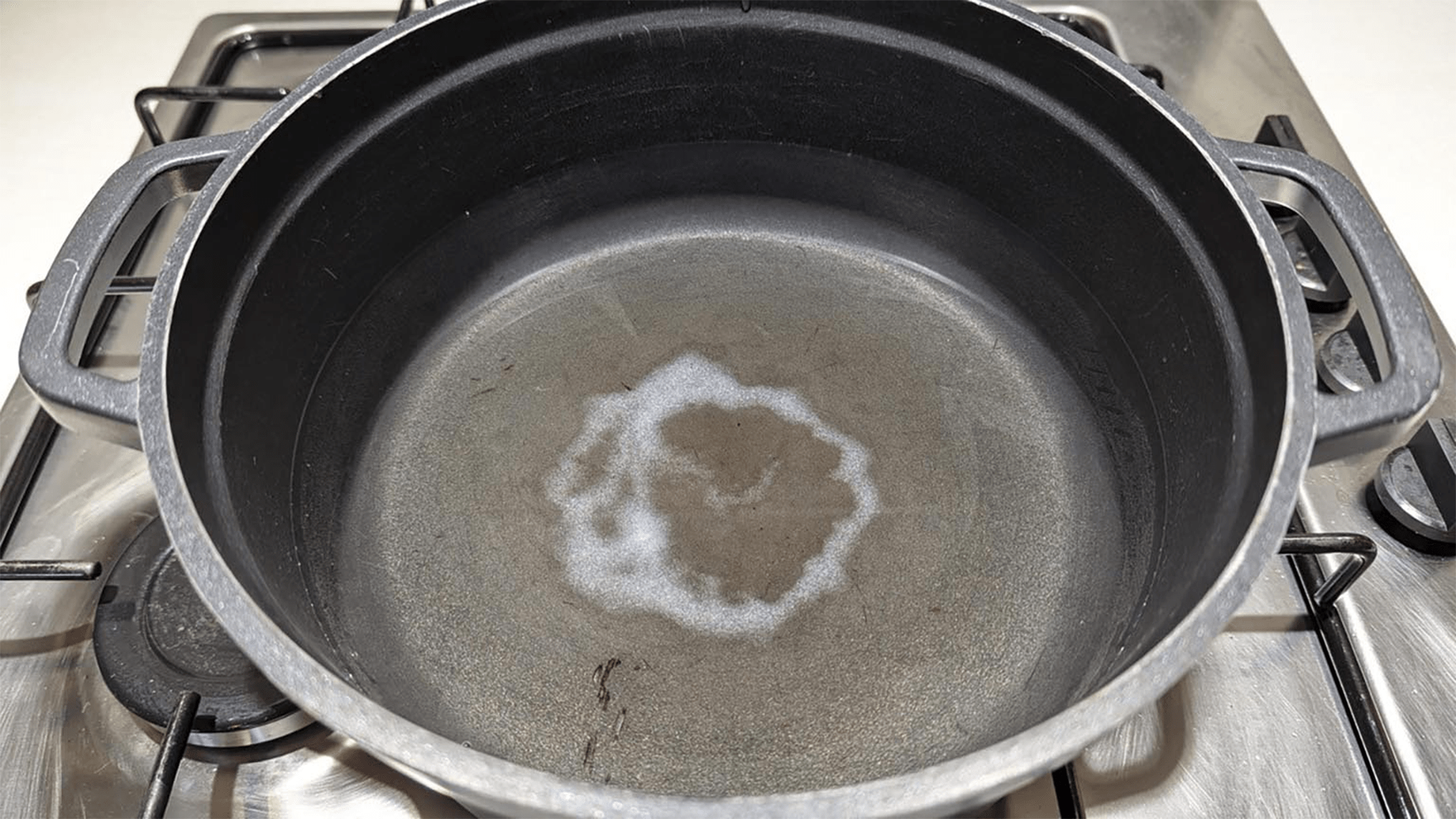When you’re boiling water for pasta, throwing a bit of salt into the water can help it boil a little bit faster–if only by a few seconds. With that, a white ring of salt deposits will often show up within the pan. A group of curious and hungry physicists harnessed the power of fluid dynamics to see what ingredients are necessary to create nicer looking salt rings–releasing larger salt particles from a greater height can help make more uniform salt deposits at the bottom of a pan. The findings are detailed in a study published January 21 in the journal Physics of Fluids.
A team from the University of Twente in the Netherlands and the French National Institute for Agriculture, Food, and Environment (INRAE) were spending an evening playing board games and eating pasta, when they began to question what it would take for them to create uniform and “beautiful” salt rings. Variables could include small grains or large ones, how many grains, how quickly, and if there is an optimal amount of water.
“By the end of our meal, we’d sketched an experimental protocol and written a succession of experiments we wanted to try on my youngest son’s small whiteboard,” study co-author and INRAE physicist Mathieu Souzy said in a statement. “It was a great overall experience, because we soon realized our simple observation of daily life conceals a rich variety of physical mechanisms!”
The team set up a tank of boiling water in a lab and tested dropping in salt of various sizes at different speeds. When a single particle is released into a tank of water, the particle settles to the bottom because of the effects of gravity. The sinking creates a small wake drag that disturbs the flow of the water around the particle.
“If a large number of particles are released at the same time, neighboring particles experience this flow perturbation generated by all surrounding particles,” said Souzy. “It causes sedimenting (falling) particles to be progressively shifted horizontally, which leads to an expanding circular distribution of the particles.”
When particles reach the bottom of the pan very quickly, they form a circular deposit. The water that travels within the wake of the cloud of particles then pushes the particles further away, like a ripple effect. This radial movement away from the center creates that clean center of the ring at the bottom of a pan.
However, the team found that if particles are released from a greater height, the sediments will fall for a longer period of time. The cloud of particles then expands in a circular direction until there is enough space between particles and the particles won’t be close enough to form a “cloud.” The particles then rain down to form this familiar homogeneous circular deposit of salt. By dropping larger particles from a greater height, the rings can appear more circular.
[ Related: Physicists figure out the perfect Cacio e Pepe recipe. ]
“These are the main physical ingredients, and despite its apparent simplicity, this phenomenon encompasses a wide range of physical concepts such as sedimentation, non-creeping flow, long-range interactions between multiple bodies, and wake entrainment,” said Souzy.
The team also found that because the larger particles move outward more than the smaller ones, they could sort the particles by size just by dropping them into the water. Souzy also reports that he can use this data in the kitchen to “create very nice salt rings almost every time.”

